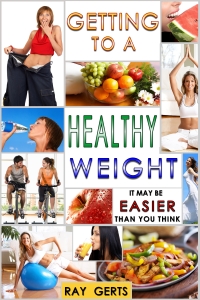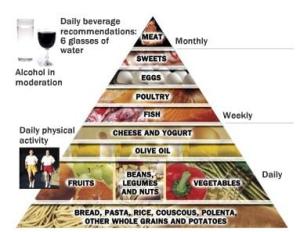Pedometer Steps to Calories Converter
How Many Calories Would You Burn in 10,000 Steps?
/about/checking-fitness-band-John-Fedele-Blend-ImagesGettyImages-557474303-56cb3e1c3df78cfb379b9166.jpg)
Use your pedometer steps to calculate your calories burned walking. You can use the charts below to quickly find how many calories you'd burn in 1000 steps, 5000 steps, 10,000 steps, or more. Or use the online calculator.
What Are Your Steps per Mile?
You will need to know your approximate steps per mile. An average number for a brisk walking speed or easy running pace is about 2000 steps per mile, but shorter people or those walking slower may have more steps per mile.
Most pedometers estimate it from your height or stride length.
- How to Measure Your Steps per Mile or Estimate it from Your Height
- How to Measure Your Stride Length
Convert Your Steps to Calories
2000 Steps per Mile - Calories Burned by Step Count and Weight | ||||||||||
Weight
|
100 lb
|
120 lb
|
140 lb
|
160 lb
|
180 lb
|
200 lb
|
220 lb
|
250 lb
|
275 lb
|
300 lb
|
Steps
|
45 kg
|
55 kg
|
64 kg
|
73 kg
|
82 kg
|
91 kg
|
100 kg
|
114 kg
|
125 kg
|
136 kg
|
1000
|
28 cal.
|
33
|
38
|
44
|
49
|
55
|
60
|
69
|
75
|
82
|
2000
|
55
|
66
|
76
|
87
|
98
|
109
|
120
|
137
|
150
|
164
|
3000
|
83
|
99
|
114
|
131
|
147
|
164
|
180
|
206
|
225
|
246
|
4000
|
110
|
132
|
152
|
174
|
196
|
218
|
240
|
274
|
300
|
328
|
5000
|
138
|
165
|
190
|
218
|
245
|
273
|
300
|
343
|
375
|
410
|
6000
|
165
|
198
|
228
|
261
|
294
|
327
|
360
|
411
|
450
|
492
|
7000
|
193
|
231
|
266
|
305
|
343
|
382
|
420
|
480
|
525
|
574
|
8000
|
220
|
264
|
304
|
348
|
392
|
436
|
480
|
548
|
600
|
656
|
9000
|
248
|
297
|
342
|
392
|
441
|
491
|
540
|
617
|
675
|
738
|
10000
|
275
|
330
|
380
|
435
|
490
|
545
|
600
|
685
|
750
|
820
|
11000
|
303
|
363
|
418
|
479
|
539
|
600
|
660
|
754
|
825
|
902
|
12000
|
330
|
396
|
456
|
522
|
588
|
654
|
720
|
822
|
900
|
984
|
13000
|
358
|
429
|
494
|
566
|
637
|
709
|
780
|
891
|
975
|
1066
|
14000
|
385
|
462
|
532
|
609
|
686
|
763
|
840
|
959
|
1050
|
1148
|
15000
|
413
|
495
|
570
|
653
|
735
|
818
|
900
|
1028
|
1125
|
1230
|
16000
|
440
|
528
|
608
|
696
|
784
|
872
|
960
|
1096
|
1200
|
1312
|
17000
|
468
|
561
|
646
|
740
|
833
|
927
|
1020
|
1165
|
1275
|
1394
|
18000
|
495
|
594
|
684
|
783
|
882
|
981
|
1080
|
1233
|
1350
|
1476
|
19000
|
523
|
627
|
722
|
827
|
931
|
1036
|
1140
|
1302
|
1425
|
1558
|
20000
|
550
|
660
|
760
|
870
|
980
|
1090
|
1200
|
1370
|
1500
|
1640
|
2200 Steps per Mile - Calories Burned by Step Count and Weight | ||||||||||
Weight
|
100 lb
|
120 lb
|
140 lb
|
160 lb
|
180 lb
|
200 lb
|
220 lb
|
250 lb
|
275 lb
|
300 lb
|
Steps
|
45 kg
|
55 kg
|
64 kg
|
73 kg
|
82 kg
|
91 kg
|
100 kg
|
114 kg
|
125 kg
|
136 kg
|
1000
|
25 cal.
|
30
|
35
|
40
|
45
|
50
|
55
|
62
|
68
|
75
|
2000
|
50
|
60
|
69
|
79
|
89
|
99
|
109
|
125
|
136
|
149
|
3000
|
75
|
90
|
104
|
119
|
134
|
149
|
164
|
187
|
205
|
224
|
4000
|
100
|
120
|
138
|
158
|
178
|
198
|
218
|
249
|
273
|
298
|
5000
|
125
|
150
|
173
|
198
|
223
|
248
|
273
|
311
|
341
|
373
|
6000
|
150
|
180
|
207
|
237
|
267
|
297
|
327
|
374
|
409
|
447
|
7000
|
175
|
210
|
242
|
277
|
312
|
347
|
382
|
436
|
477
|
522
|
8000
|
200
|
240
|
276
|
316
|
356
|
396
|
436
|
498
|
545
|
596
|
9000
|
225
|
270
|
311
|
356
|
401
|
446
|
491
|
560
|
614
|
671
|
10000
|
250
|
300
|
345
|
395
|
445
|
495
|
545
|
623
|
682
|
745
|
11000
|
275
|
330
|
380
|
435
|
490
|
545
|
600
|
685
|
750
|
820
|
12000
|
300
|
360
|
415
|
475
|
535
|
595
|
655
|
747
|
818
|
895
|
13000
|
325
|
390
|
449
|
514
|
579
|
644
|
709
|
810
|
886
|
969
|
14000
|
350
|
420
|
484
|
554
|
624
|
694
|
764
|
872
|
955
|
1044
|
15000
|
375
|
450
|
518
|
593
|
668
|
743
|
818
|
934
|
1023
|
1118
|
16000
|
400
|
480
|
553
|
633
|
713
|
793
|
873
|
996
|
1091
|
1193
|
17000
|
425
|
510
|
587
|
672
|
757
|
842
|
927
|
1059
|
1159
|
1267
|
18000
|
450
|
540
|
622
|
712
|
802
|
892
|
982
|
1121
|
1227
|
1342
|
19000
|
475
|
570
|
656
|
751
|
846
|
941
|
1036
|
1183
|
1295
|
1416
|
20000
|
500
|
600
|
691
|
791
|
891
|
991
|
1091
|
1245
|
1364
|
1491
|
2400 Steps per Mile - Calories Burned by Step Count and Weight | ||||||||||
Weight
|
100 lb
|
120 lb
|
140 lb
|
160 lb
|
180 lb
|
200 lb
|
220 lb
|
250 lb
|
275 lb
|
300 lb
|
Steps
|
45 kg
|
55 kg
|
64 kg
|
73 kg
|
82 kg
|
91 kg
|
100 kg
|
114 kg
|
125 kg
|
136 kg
|
1000
|
23 cal.
|
28
|
32
|
36
|
41
|
45
|
50
|
57
|
63
|
68
|
2000
|
46
|
55
|
63
|
73
|
82
|
91
|
100
|
114
|
125
|
137
|
3000
|
69
|
83
|
95
|
109
|
123
|
136
|
150
|
171
|
188
|
205
|
4000
|
92
|
110
|
127
|
145
|
163
|
182
|
200
|
228
|
250
|
273
|
5000
|
115
|
138
|
158
|
181
|
204
|
227
|
250
|
285
|
313
|
342
|
6000
|
138
|
165
|
190
|
218
|
245
|
273
|
300
|
343
|
375
|
410
|
7000
|
160
|
193
|
222
|
254
|
286
|
318
|
350
|
400
|
438
|
478
|
8000
|
183
|
220
|
253
|
290
|
327
|
363
|
400
|
457
|
500
|
547
|
9000
|
206
|
248
|
285
|
326
|
368
|
409
|
450
|
514
|
563
|
615
|
10000
|
229
|
275
|
317
|
363
|
408
|
454
|
500
|
571
|
625
|
683
|
11000
|
252
|
303
|
348
|
399
|
449
|
500
|
550
|
628
|
688
|
752
|
12000
|
275
|
330
|
380
|
435
|
490
|
545
|
600
|
685
|
750
|
820
|
13000
|
298
|
358
|
412
|
471
|
531
|
590
|
650
|
742
|
813
|
888
|
14000
|
321
|
385
|
443
|
508
|
572
|
636
|
700
|
799
|
875
|
957
|
15000
|
344
|
413
|
475
|
544
|
613
|
681
|
750
|
856
|
938
|
1025
|
16000
|
367
|
440
|
507
|
580
|
653
|
727
|
800
|
913
|
1000
|
1093
|
17000
|
390
|
468
|
538
|
616
|
694
|
772
|
850
|
970
|
1063
|
1162
|
18000
|
413
|
495
|
570
|
653
|
735
|
818
|
900
|
1028
|
1125
|
1230
|
19000
|
435
|
523
|
602
|
689
|
776
|
863
|
950
|
1085
|
1188
|
1298
|
20000
|
458
|
550
|
633
|
725
|
817
|
908
|
1000
|
1142
|
1250
|
1367
|
The calorie numbers are based on MET research, metabolic equivalents for different physical activities, taking an average of the calories burned at walking speeds from 2 to 4 miles per hour. The heavier you are, the more calories you burn walking.
Pedometer Step Equivalents for Other Activities: Give yourself step credit for a wide variety of physical activities, based on the calories burned.
How to Burn More Calories Walking: How to boost the calories you burn while enjoying a walk.
You can contact my on LinkedIn or Twitter (@ray0369)
I write several blogs and e-books, check out some of my other sites.
gettingtoahealthyweight.blog
idropped40pounds.wordpress.com
howbaddoyouwanttoloseweight.blogspot.com
blogonweight.blogspot.com
idropped40pounds.wordpress.com
howbaddoyouwanttoloseweight.blogspot.com
blogonweight.blogspot.com
If you really want to lose your body fat than look for my e-books at the websites listed below. You'll get information on Healthy eating, exercise, and diet. Instead of spending hours on the internet reading dozens of posts, you can save time by picking up one of my e-books.
There are two e-books. “How Bad Do You Want To Lose Weight?” is available at all the online bookstores selling for $1.99. Go to any of the websites below and search the title to find my e-book. This book gives you all you need to lose weight without spending money on gym memberships, diet plans or meal plans. Look for my book. at Amazon.com, B&N.com, iBooks, Kobo.com, Scribd.com, or Gardner Books in the U.K.
My new e-book is available on Smashwords.com, just type “getting to a Healthy Weight” in the search box at the top of the home page. I’ll give you a discount coupon you can use at checkout. (PJ42H) not case-sensitive the price is $1.99 w/coupon







